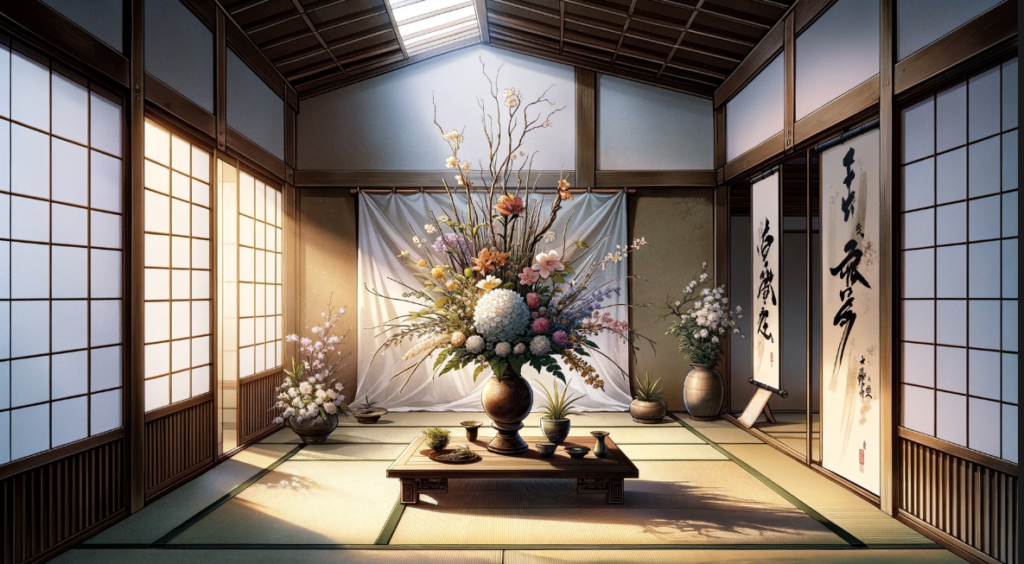
Lesson 13. Art of Ikebana
Topic Question: Can you describe the traditional Japanese art of ikebana?
No. 1
First, try answering the question yourself.
The instructor will provide advice on vocabulary, grammar, and expression corrections.
Sample Answer – Let’s read aloud – The instructor will check your pronunciation and accent.
Ikebana is the Japanese art of flower arrangement, distinguished by its disciplined form and emphasis on shape, line, and form. Unlike merely decorative flower arrangements, ikebana seeks to bring out the inner qualities of flowers and other natural elements, creating a harmonious composition that reflects the beauty and impermanence of life. This art form dates back to the 7th century when floral offerings were made at altars. Over time, it evolved into a more stylized form of expression, deeply rooted in Zen Buddhism, emphasizing minimalism, asymmetry, and the importance of space in the arrangement. Ikebana is not just an art; it’s a meditative practice that fosters a deep connection with nature and cultivates patience, discipline, and a sense of beauty.
No. 2
5 Words to Learn and Their Meanings – Pronounce the Words Correctly (Pronunciation Training) + Make Sentences Using the Words Instantly
- Disciplined (規律のある): Showing a controlled form of behavior or way of working.
His disciplined approach to training has made him one of the top athletes in his field.
- Harmonious (調和のとれた): Forming a pleasing or consistent whole.
The harmonious design of the garden brought a sense of calm and peace.
- Impermanence (無常): The state or fact of lasting for only a limited period of time.
The art of ikebana teaches us to appreciate the impermanence of beauty.
- Minimalism (ミニマリズム): A style or technique that is characterized by extreme spareness and simplicity.
She prefers the minimalism of contemporary architecture, with its clean lines and functional design.
- Asymmetry (非対称): Lack of equality or equivalence between parts or aspects of something; lack of symmetry.
Asymmetry in art can often make compositions more dynamic and interesting.
No. 3
3 Key Phrases and Example Sentences
- Inner qualities (内面の質):
Ikebana is about highlighting the inner qualities of flowers, not just their external beauty.
- Reflects the beauty (美しさを反映する):
A well-crafted poem reflects the beauty and complexity of human emotions.
- Deep connection with nature (自然との深いつながり):
Spending time in the mountains fosters a deep connection with nature and its rhythms.
No. 4
Discussion and Exchange of Opinions on the Sample Answer
Instructor: How does ikebana compare to other forms of artistic expression in terms of its philosophy and practice? Do you think there are similar art forms in other cultures?
Student: [Opinions of students]
No. 5
Free Discussion on the topic
Let’s discuss the role of nature in art and how it influences various cultural expressions. How do you think integrating elements of nature into our daily lives, such as through ikebana, can impact our well-being and perspective on life?







